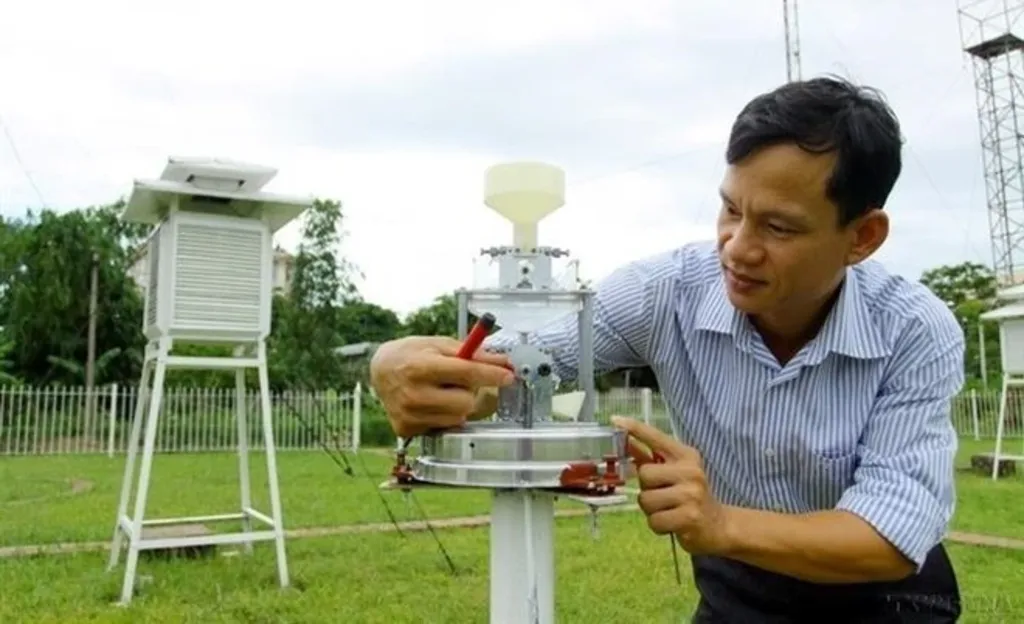 |
| An employee of the hydrometeorological station for the northern central region checks a weather monitoring device__Photo: VNA |
By 2025, the average density of hydrometeorological stations across the national network will reach the level of the developed Southeast Asia countries, while the quality of forecasts will be improved to serve socio-economic development, help maintain national defense and security, and facilitate disaster preparedness and climate change response.
Such is provided under Prime Minister Decision 289/QD-TTg of April 8, approving the Master Plan on the national hydrometeorological network for the 2021-30 period, with a vision toward 2050.
Accordingly, the Master Plan will focus on developing, upgrading, automating and modernizing the network with more observation elements, and increasing the density of meteorological forecast stations, particularly in areas frequently affected by disasters, areas greatly impacted by climate change, coastal areas, islands and archipelagos under the sovereignty and sovereign rights of Vietnam. It also aims to secure a rational distribution of the meteorological station network among areas with different hydrometeorological and topographical conditions.
Specifically, by 2025, there will be one surface meteorological monitoring station per 1,100km2; one rainfall measurement station per 121km2; one radiation station per 21,000km2; one lightning detection station per 15,000km2; one hydrological station per 1,520km2 per basin; and one oceanographical station per 112km along the coastline.
In addition, the automation levels across the entire network of hydrometeorological stations will exceed 40 percent for surface meteorological stations; 50 percent for water-level monitoring stations; 100 percent for rainfall measurement stations; and 20 percent for streamflow measurement stations.
By 2050, it is expected to have 5,886 hydrometeorological stations throughout the country that meet the standards of the developed countries worldwide, including surface meteorological stations, agricultural meteorological stations, rainfall measurement stations, upper-air meteorological stations, weather radar stations, hydrological stations, oceanographic stations, lightning detection stations, and other specialized stations.- (VLLF)









